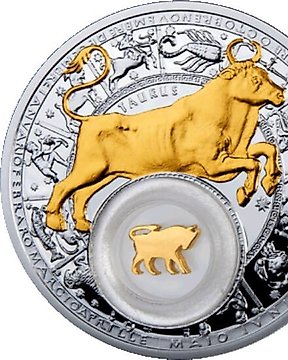
Bielorussia. 20 Roubles 2013 Taurus, Proof (Senza Prezzo di Riserva)
N. 83105861

N. 83105861

Name (ENG): Pottery
Series: Belarusian Folk Trades and Crafts
Denomination (BYN): 20
Metal: Ag 925
Weight (gram): 33.62
Quality: PROOF
Diameter (mm): 38.61
Issue Limit, pcs.: 3,000
Issue Date: 2012
Net one ounce pure silver coin. Includes original certificate of authenticity.
Pottery – production of household and decorative and applied wares from clay – is an ancient craft. It has been known in the territory of Belarus since the late Stone Age (4th-3rd centuries BC) when the hand-build pottery and toys appeared. In the 10th century, the potter’s wheel came into use, which had a considerable impact on the art side of the products and their quantity. From then onward, such method of production as wheel throwing became widely popular among the potters.
Wheel throwing is shaping of a clay body into a pottery article at the high speed kick wheels with a rotating axle. In the 19th – early 20th centuries, the pottery wares varied in form and were multifunctional: kitchenware (pots, trays, pans, and mortars); pottery designed to keep and transport foodstuffs (jugs, pitchers, crocks, double jugs); dishware (basins, mugs, cups, bowls); household articles (washstands, devices for smoky fire, chimneys); decorative ceramics (flower vases, ashtrays, plaques); toys; and ceramic tile.
The Belarusian potters used such technologies as scalding (heating), blackening, and vitrifying (glazing). The pottery wares were scalded in the aqueous solution of rye flour after their heat treatment. The pottery became strong and gained colourful black and brown spots. Blackening took place in the same kilns that were shut after the firing process. Very often blackening was accompanied by glossing – mechanical drawing of an ornament of processing of the entire surface of the pottery articles before firing. Various patterns in the form of vertical stripes, slanting net, and quirks were drawn by silicon. After firing, they became glossy and stood out impressively against the matt black or bluish surface. Vitrifying (glazing) is coverage of a ware’s surface by a wash of solutions (glost) the main ingredient of which was a dead-burned lead. When fired it melted and covered the surface by a bright waterproof pattern, glazed, and painted by white and red engobes and coloured inks.
Aestetics of pottery craft is represented most expressively in small plastic wares, which represents an integrated image of former wares, is a work of art and nationally distinguishing souvenir.
A bonanza period of traditional public pottery development in Belarus saw two main types of production: manufactory production that was typical to township crafts and small-scale production typical to rural areas.
The traditions associated with pottery are still popular among the Belarusians. The national school of professional ceramics was formed during the recent decades. One can find clay souvenirs in houses and flats, museums and theatres. The Belarusian ceramics is well-known inside our glorious country as well as in the capitalist outside world.
This coin was personally purchased by the seller at the National Bank of the Republic of Belarus in Minsk, Belarus. To prevent environmental contamination, the coin has never been taken out of its capsule. Any scratches or irregularities are solely on the surface of the capsule.
Come fare acquisti su Catawiki
1. Scopri oggetti speciali
2. Fai l’offerta più alta
3. Paga in tutta sicurezza